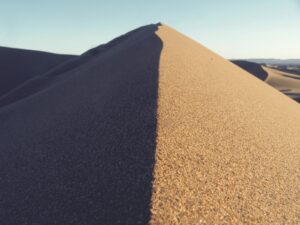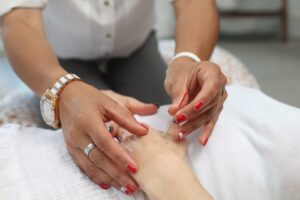Subscribe to the Newsletter
If you are interested in understanding how Traditional Chinese Medicine can improve your life sign up to my newsletter for the latest updates.

The Lesser Yang Shao Yang stage is the second of the Six Stages of Cold disease as Cold penetrates into the body.
This ancient theory of disease remains in daily use today, 1800 years after being elaborated by Zhang Zhong Jing.
If you read on, you’ll find that those ancient Chinese knew a thing or two about what it was like to get ill! And they made sense of it in a way we can still use to our great benefit.

Of course over succeeding centuries Chinese doctors learned more about how it worked, culminating in another theory put forward 1500 years later, but that later theory, the Four Levels of Disease, deals not with Cold disease but with the invasion of Heat. The Four Levels theory is more useful for many viruses, including influenza-type illnesses, such as Covid 19, on which we’ve got a page ‘Cope with Fever‘.
If that introduction puts you off, I’m sorry – just trying to be precise! Please read on a bit, and you’ll probably find quite a lot is familiar.
Unlike the third stage, the Bright Yang stage, this Lesser Yang Shao Yang stage is fairly common in Western developed countries where we are either less fit or better at preventing the high fevers of the Bright Yang stage.
In a way, this is a pity. The Bright Yang stage is a strong defence mounted by your body when attacked by Cold disease.
This, the Lesser Yang Shao Yang stage, is not so strong, and can take longer. If it takes much longer, that means more suffering. When it goes on a bit, most people succumb to the blandishments of modern pharmacists and take painkillers.
That means that their ills are usually successfully ‘suppressed’. That’s not necessarily a good thing. Why? Read Suppression.
The Lesser Yang Shao Yang stage mobilises two channels of acupuncture, which are really one long one, called the Lesser Yang Shao Yang channel:
This long channel is on the side of your body, whereas the Greater (Tai) Yang channels (again made up of two long ones, Small Intestine and Bladder) are mostly on your back, your most Yang area.
In the Greater Yang Tai Yang stage your body kept the invader in the Yang areas – on your back. Now it’s been forced to permit the invader half-way round to the front, the Yin area.

So your body is still fighting but the invader is half-way through the door. As the door swings one way or the other, the invader is pushed out or forces its way further in.
Of course, these are figurative: pictures to help us understand. There isn’t a great big bogeyman, Wind-Cold, that you can see. But your body behaves as if, fighting this invisible opponent, it is trying to keep it away from the centre.
The symptoms, such as the bitter taste, fullness under the ribs and blurred vision come from these two channels, particularly the Gallbladder channel, which plays a large part in maintaining vision and courage: in this state you aren’t feeling very courageous.
The main feature of this Lesser Yang Shao Yang stage is that the body and the wind-cold are almost evenly matched, so at times one is winning, at times the other.
This means you get an alternation between keeping the disease process on the outside and letting it in, as your body strives to keep it out. It’s like alternating between the first two stages, above.
When it’s on the outside, you get shivering. When it’s on the inside, you get fever.
Don’t let yourself get cold and do keep warm. That’s about it. (What about a hot bath? Stay in it until you start to sweat slightly. But don’t stay in it for more than 15 minutes even if you haven’t started to perspire. Instead, get into bed with a hot water bottle or hot bean-bag – but don’t burn yourself! And lots of bedclothes. Try to sleep for some hours.)
At this Lesser Yang Shao Yang stage, I’m not sure vigorous physical exercise is so helpful because your body’s energy is already depleted and only just holding its own.
Making your body take vigorous exercise, to the point where you sweat, may weaken it further, allowing the invader to push in more. Sleep is a better suggestion. Lots of rest.
However, you must keep your energy up so you should try to eat and drink small amounts, even if you don’t relish them.
Acupuncture has been used to treat this for 1800 years. Points along the Lesser Yang Shao Yang channels (Gallbladder and Three Heater) would mostly be used, the aim being to release the invader outwards by harmonising the channel. For example, TH 5, TH 6, TH 17, GB 34, GB 41, Du 13.
There is an ancient herbal recipe that is often very effective: Xiao Chai Hu Tang.
In that case, the disease has penetrated past your first two Yang defences and is now at the Bright Yang Yang Ming stage on its way to your Yin defence area, ie the Greater Yin stage. However, the last of these Yang defences (ie the Bright Yang Yang Ming stage) is a strong one.

Stay in Touch!
No spam, only notifications about new articles and updates.

Book a Video consultation if you want to know more about your symptoms

This Introductory Chinese medicine course introduces you to the amazing thinking behind this ancient medicine, now increasingly in demand.

The Scottish College for Chinese medicine provides introductory courses for all, explaining Chinese medicine and its cultural background.

Master Tung’s acupuncture is a hidden treasure, lost to China but recovered in Taiwan from where it spread round the world.

Knee pain has five main causes. It’s certainly worth trying acupuncture before you resort to surgery!
Subscribe to the Newsletter
If you are interested in understanding how Traditional Chinese Medicine can improve your life sign up to my newsletter for the latest updates.
Subscribe to the Newsletter
If you are interested in understanding how Traditional Chinese Medicine can improve your life sign up to my newsletter for the latest updates.